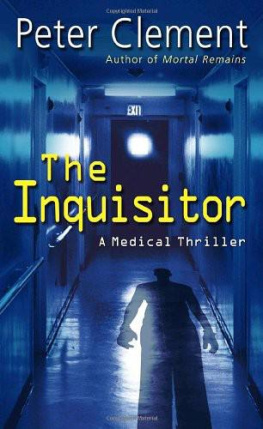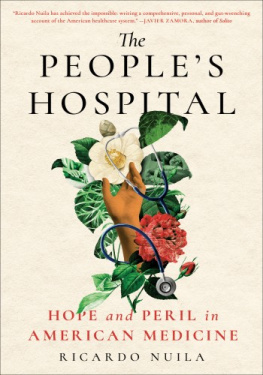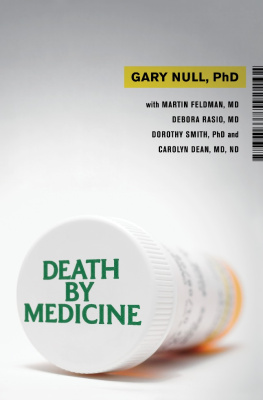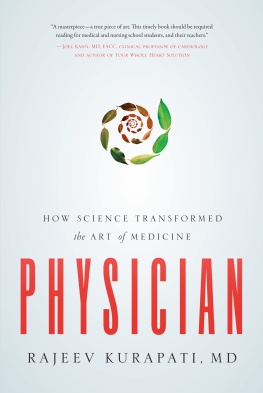THE PROCEDURE by Peter Clement About the Author Peter Clement, M.D."is a physician who headed an emergency room at a major metropolitanhospital and now maintains a private practice. He is also the author ofLethal Practice and Death Rounds. He is married to a physician and has twosons. FAWCETT BOOKS NEW YORK The BallantinePublishing Group Sale of this book without a front cover may be unauthorized. If this book is coverless, itmay have been reported to the publisher as "unsold ordestroyed" and neither the author nor the publisher may have received payment forit. Published by TheBallantine Publishing Group Copyright 2001 by BaskervilleEnterprises, Ltd.
All rights reservedunder International and Pan-American Copyright Conventions. Publishedin the United States by The Ballantine Publishing Group, adivision of Random House, Inc." New York, and simultaneously inCanada by Random House of Canada Limited, Toronto. Ballantine is aregistered trademark and the Ballantine colophon is a trademark of RandomHouse, Inc. www. randomhouse.co/BB/ Library of CongressCatalog Card Number: 00-193360 ISBN 0-449-00622-0 Manufactured in theUnited States of America First Edition: June2001 10 987654321 ACKNOWLEDGMENTS My heartfelt thanks toDenise Marcil for her support from start to finish, to Joe Bladesfor taking me under his wings at Ballantine, to my longtime friends Dr.Brian Connolly and Dr. Jennifer Frank for their encouragement andadvice on medical matters, and to my eagle-eyed proofreaders Betty,Connie, Doug, James, Joan, Johanna, and, last but definitely not least,Tamara--you are all truly amazing.
This book is dedicatedto James, Sean, and Vyta--and all their loving intrusions while Iwrite--for teaching me every day what really matters. THE PROCEDURE Prologue I had to watch the onewith the needle. No matter that I heardthe psychiatrist step up to the side of my stretcher and coollybegin to explain what they were about to do with me, nor that I felt thetug of the nurse's hands as she secured the IV in my left arm withadhesive tape. I kept my eye on the silent anesthetist who wasstanding behind my head. His syringe lay capped on a nearby table. thirtyseconds after the succinylcholine is injected, you will feel your musclestwitching, and then the paralysis will occur. thirtyseconds after the succinylcholine is injected, you will feel your musclestwitching, and then the paralysis will occur.
The transmission of neuroelectrical impulses through the nerve ends to striated muscle will beblocked, and all movement, including respiration, will bestopped. It is the extreme unpleasantness of mounting air-hungerthat will, in the end, condition your response, and so you will be allowedto endure it for eighty seconds. At that point the anesthetist willstart to ventilate you and will carry on making you breathe until thedrug wears off, in about four minutes. Your heart will continue tobeat, and the drug won't affect your sphincters, so you won't soil..." I knew that thepsychiatrist's matter-of-fact tone was a lie-others who'd gone before hadwarned, "It feels like death." I ignored the droning words andstrained my eyes farther back to keep the anesthetist in view. All I managedto see now were his hands as he deftly snapped the blade of alaryngoscope open to make sure the light worked. Then he glided his glovedfingers over an assortment of rubber tubes and black curved airways arranged on a tray like an array of hors d'oeuvres.
He adjusteda few of these items so they'd be easier to reach. Close by, alsonear enough to him that he could pull them into position when he neededthem, were portable oxygen tanks connected by green tubing to a blackbag and thick rubber mask. "... you will poura small amount of your usual drink into a glass. First, smell it, thentake a sip and hold the..." The nurse moved upbeside the anesthetist, bringing with her a small steel table on wheels.It held a clear bottle the size of a largs pickle jar and a vacuumpump to provide suction. She verified the motorwas plugged into a wall outlet, then uncoiled a beige-colored catheterwith a metal tip and connected it to a tube dangling from a stopperwhich sealed the bottle.
The anesthetist flicked a switch on thetable and adjusted the force of suction until it was adequate toclear vomit from an airway. A nod to the nurse, and they were ready. I felt myself start tosweat as I sat up and watched the psychiatrist reach down into abriefcase and pull out the small green bottle--flat, contoured to fit in ahip pocket, and with a familiar yellow label. Some of his subjects, Iknew, even at this point, gulped the contents greedily. Another hadtold me of being too overwhelmed by fright to drink anything. If Ididn't play this part just right, and anybody saw through me, I could endup dead.
I saw the anesthetistpick up the syringe. The nurse swabbed a little rubber side port on theIV line with an alcohol wipe, readying it for the injection. At leastmy fear should pass muster, I tried to reassure myself. It wasabsolutely genuine and mounting by the second. I took the container ofwhiskey from the psychiatrist when he held it out to me, but my handsstarted to tremble and I fumbled with the cap. Once I got it open, thenurse pressed a glass into my right hand, then steadied it for mewhile I poured myself a mouthful of the amber liquid.
The familiarbouquet mingled with the medicinal smell given off by her fingers. Ifelt the anesthetist move up to my left arm and turned in time to see him jab the syringe into the rubber portal. His thumb was poised on theplunger. "Now take a sip,"the psychiatrist commanded, "then swirl it around in your mouth." I needn't have worriedabout my giving a convincing performance. My hands began to shakeso badly for real that I was afraid I'd slosh the contents over theside of the glass. The nurse again steadied them and helped me raise thedrink to my lips.
As the fluid entered my mouth I barely sensedthe warmth on my tongue. Instead I kept straining to see thesyringe, watching the plunger. My whole body was trembling now. It feelslike death! I tried to swallow but gagged, and the whiskeydribbled down my chin. I couldn't continue. Ihad to stop this.
I heard myself start to moan. "Swallow it!"the psychiatrist snapped, startling me with the sudden harshness of his voice. "Noooooo!" Iwailed. "I changed mymind!" I tried to twist my left arm away from the anesthetist's grip. But it was too late.He'd shoved in the plunger before my move could pull the IV away fromthe syringe. I sat frozen staring atmy arm.
The nurse quickly took the glass and bottle out of my hands,but I was so transfixed on the IV site that I barely noticed. Theanesthetist moved to the head of the stretcher, ready for what camenext. I felt a tinglingsensation pass through my elbow and rise toward my shoulder. I started topanic. "No! No!" Ipleaded, looking first at the psychiatrist, then at the nurse. "Stop it, pleasestop it!" But their returning gaze was cold.
I tried to yank the IV out,then clutched frantically at the upper part of my left arm in a futileattempt to prevent the injection from reaching the rest of my body. I wassobbing when the twitching started. The muscles in my arms, mytrunk, and finally in my legs gave a few feeble jerks, then failed me,going completely flaccid. I flopped back on the stretcher, notbreathing, still as death, yet fully conscious. I caught my reflection in the large circle of stainless steel that encased the overheadlight. My eyes--open, unmoving, the pupils dilated byterror--appeared unseeing and lifeless.
But I saw all too well,and the expressions on the faces of the three who'd done this to mewere chillingly indifferent as they leaned over to check my pulse, todocument my loss of reflexes, or to simply stare down at the effects oftheir work. Eighty seconds. It hadsounded not so terribly long, like nothing much more than holding mybreath. But I had no breath to hold because I hadn't timed mybreathing properly, and when the succinylcholine blocked my respiratorymuscles, what little air I had taken in was lost as my lungs deflated.The smothering pressure in my chest, unbearable at the outset,increased steadily. In my mind I bucked and strained against the grip of theparalysis, but my muscles remained slack, useless. "Ten seconds,"the anesthetist said dryly. "Ten seconds,"the anesthetist said dryly.
Next page







